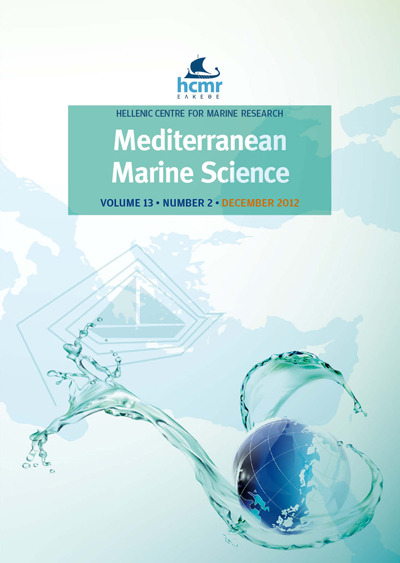Environmental properties of the southern Gulf of Aqaba, Red Sea, Egypt

Abstract
El-Sheikh, Red Sea, Egypt were studied seasonally throughout a year from March 1995 to March 1996. Water samples were
collected from five water depths (0, 25, 50, 75 & 100 m). The studied parameters exhibited clear seasonal variability along the water column. The vertical distribution of water temperature showed thermal homogeneity during most seasons, and thermal stratification in summer. Dissolved oxygen attained slightly high concentrations (5.3-7.8 mg l-1) in the whole water column, with slight seasonal variation. The concentrations of nutrients reflected dominant oligotrophic conditions in the epipelagic zone and occasional mesotrophic status at some depths. Phosphate fluctuated between 0-0.7 μM, ammonium (0-2.27 μM), nitrite (0-0.72 μM), nitrate (0-1.49 μM) and silicate (0-6.48 M). Phytoplankton biomass was generally low in the epipelagic zone throughout the study, whereas chlorophyll a was less than 0.5 μg l-1, except relatively high concentration (0.7-1.12 μg l-1) in deep layers in spring. In comparison with previous studies on the Gulf of Aqaba all environmental parameters during present study showed pronouncedly
different values.
Article Details
- How to Cite
-
DORGHAM, M., EL-SHERBINY, M., & HANAFI, M. (2012). Environmental properties of the southern Gulf of Aqaba, Red Sea, Egypt. Mediterranean Marine Science, 13(2), 179–186. https://doi.org/10.12681/mms.297
- Issue
- Vol. 13 No. 2 (2012)
- Section
- Research Article
Authors who publish with this journal agree to the following terms:
- Authors retain copyright and grant the journal right of first publication with the work simultaneously licensed under a Creative Commons Attribution Non-Commercial License that allows others to share the work with an acknowledgement of the work's authorship and initial publication in this journal.
- Authors are able to enter into separate, additional contractual arrangements for the non-exclusive distribution of the journal's published version of the work (e.g. post it to an institutional repository or publish it in a book), with an acknowledgement of its initial publication in this journal.
- Authors are permitted and encouraged to post their work online (preferably in institutional repositories or on their website) prior to and during the submission process, as it can lead to productive exchanges, as well as earlier and greater citation of published work (See The Effect of Open Access).





